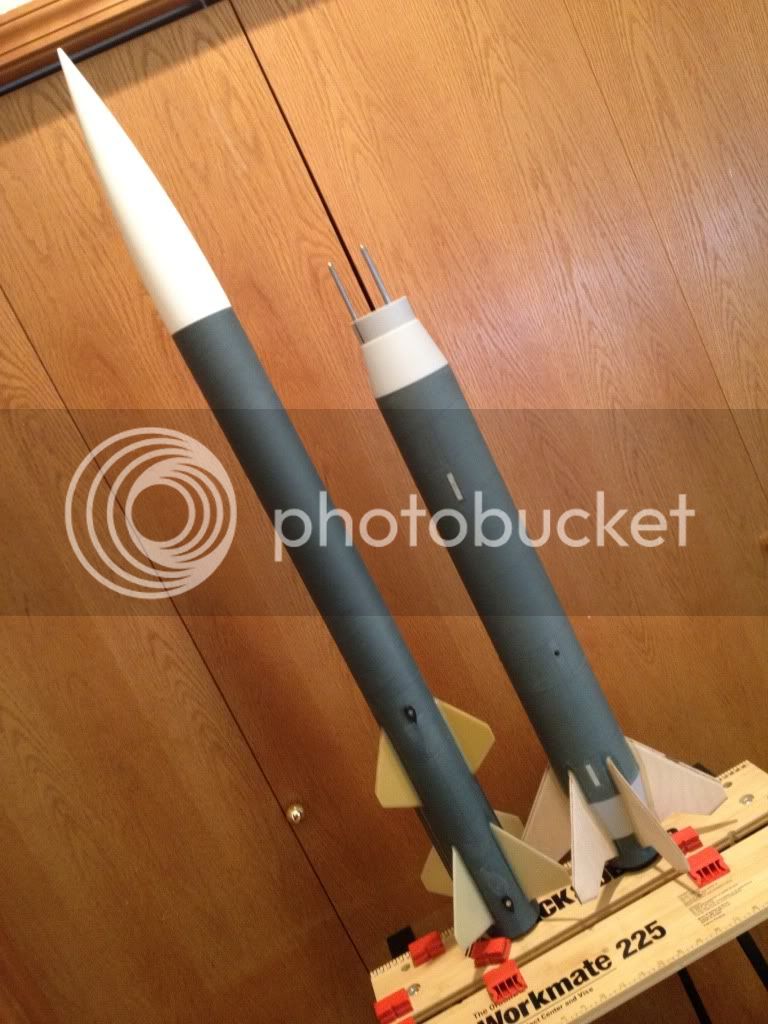- Joined
- Mar 15, 2011
- Messages
- 2,158
- Reaction score
- 12
Steely, You build a fine rocket!
I Love your design work Too!!
I Love your design work Too!!

Steely, You build a fine rocket!
I Love your design work Too!!
+2. An original, beautiful design and great worksmanship. Keep it going.You can say that again ! Makes me feel humbled :blush:
Steely, You build a fine rocket!
I Love your design work Too!!
You can say that again ! Makes me feel humbled :blush:
I don`t suppose you`re looking forward to the "filling of the spirals" after all those fillets.
Are you using Bondo spot putty then sealing the tubes ?
And BTW.....that`s one rocket that I will need to see fly !!!
+2. An original, beautiful design and great worksmanship. Keep it going.
Thanks Eric. Hey, are you still contemplating the URIAH in PVC?
Oh Yes, It's in the works for the 2012 line.
Thank you Kindly!
I'm trying to rearrange the shop. Gearing up for serious fiberglass machining.
Adding a Vacuum system for dust control. Plus a few other accessories!
You'll see the results this year.:wink:
I can't use "terminals" like you have on my two-stagers, but in looking at yours, it occurs to me that such an approach might allow the use of a shunt. The shunt could be connected to the booster and the terminals such that the parts would have to separate and break the shunt before the sustainer could be lit. It might be better to do this with a separation charge. I hear stories from time to time about sustainer motors lighting on the ground and I know someone that was injured by that. A shunt would provide one more layer of safety. I'm going to see if I can figure out a way to do this on my two stagers.
Jim


Nice solution but get the heck out of the way when those spikes reach ground level! :y:
I think of it as a more subtle, concealed version of the Big Battle Axe.

Fiberglass and carbon rockets be damned. When I sleep I dream of the stuff you build.





So that the interstage coupler would mount firmly and flush with the surface of the anchor bulkhead, I used "thumb nuts" (aka knurled nuts) to secure the aft bulkhead of the interstage coupler. The tops of three thumb nuts provide a flat surface which butts up against the anchor bulkhead...
After discussing some aspects of this project with Bret over the phone, he convinced me to head over here and check it out. He also made a great case as to why I should register and participate on TRF as well. After reviewing this build, all I can say is WOW... you are a "steely eyed missile man".
This should be a hoot to prep and to fly.
Looking forward to more posts!
p.s. love the nosecone bulkhead vid!
I was going to ask you what you had used for spacers ,but I see now.
Do you just happen to have all this hardware lying around your shop ,because if you did, I must insist on seeing pictures.
And I thought I had parts bins and hardware !
Looking good chum !
Paul T
After discussing some aspects of this project with Bret over the phone, he convinced me to head over here and check it out. He also made a great case as to why I should register and participate on TRF as well. After reviewing this build, all I can say is WOW... you are a "steely eyed missile man".
This should be a hoot to prep and to fly.
Looking forward to more posts!
p.s. love the nosecone bulkhead vid!
Enter your email address to join: